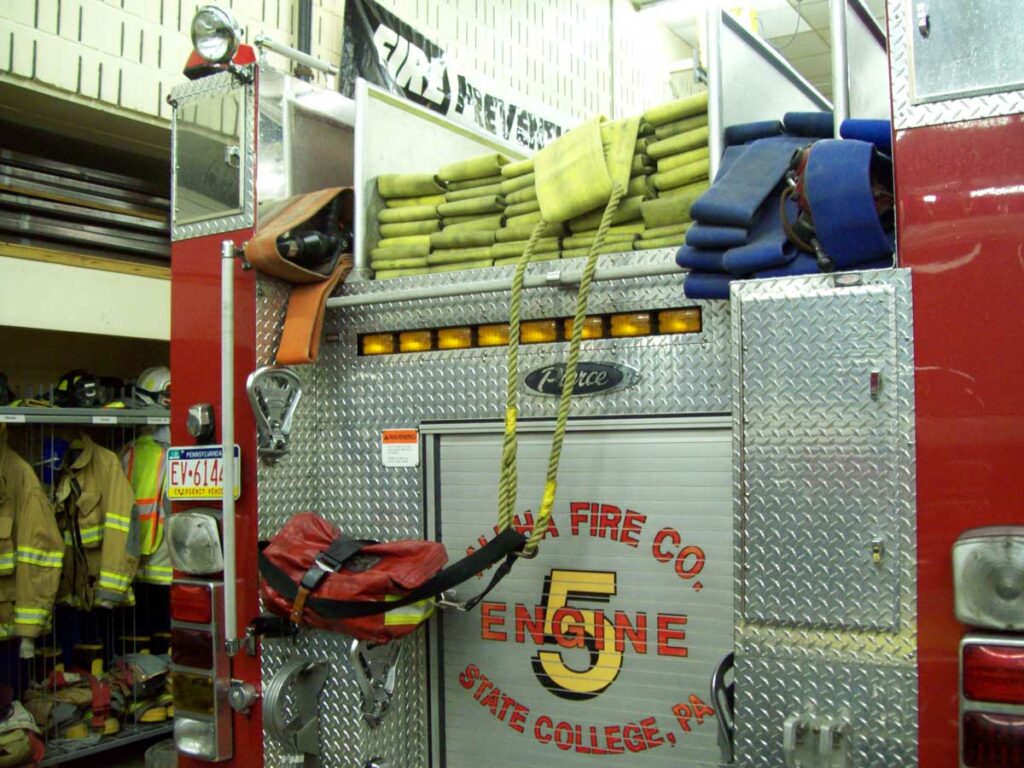What’s the best location on the fire apparatus for the hydrant kit?

Photos by author
All firefighters know how important it is to quickly secure a water supply. Whether it is a pressurized source or a rural water setup, establishing the source is a vital benchmark for the entire firefighting operation.
In the case of a hydrant source, there are a few different ways of assembling a hydrant kit that will allow for a quick deployment of needed equipment. One such way is shown in the attached photos. As you can see in photo 1, there is a small rope attaching both the hydrant kit and the large diameter hose. By combing the two together, it allows one firefighter to become much more effective by grabbing the rope (taking both items at once) and placing it around the hydrant neck, as seen in photo 2.

The purpose of the rope is to allow the firefighter to wrap the hydrant so that the fire apparatus can drive forward to the structure. The firefighter can start to prep the hydrant while the fire truck is driving away because the rope is holding the hose and kit there. This replaces the firefighter having to step or kneel on the hose to hold it. Webbing can also be used in lieu of rope. Having the kit assembled in this fashion is not the only way, but a way.
One important factor is the weight of the hydrant bag. The hydrant bag should not be overloaded with equipment so that it becomes impossible to carry or causes overexertion to occur when carrying it. The equipment inside the bag should be what is needed most and used on a usual basis. What this list of equipment is will be dictated by each fire department and their operations.
Are You Using the Hydrant Kit to Maximum Advantage?
Another important factor is the height at which the hydrant bag/kit is stored at or placed at on the truck. Having it too high requires stepping up on the tailboard or a few steps to get access to it. Some departments have high hose beds, and they will place the hydrant kit on top of the hose bed, requiring the firefighter to have to climb up to get access to it. If placing or storing the hydrant kit lower on the truck, it needs to be secured so that it will not fall off when driving. The device used to secure it needs to be easy to undo when it comes time for deployment.
The best way to determine the type of set-up and the location of the hydrant kit/bag is to play around with it and prove it in practice/training.
Equipment needed: hydrant bag, high volume hose (4 or 5 inches), access to a hydrant, a piece of rope or webbing (if desired)
Goal: To become familiar with deploying a hydrant kit/bag and securing a hydrant
Drill:
- Grab the existing hydrant kit/bag to inventory the items inside. Determine what items are essential and used most often and which ones are not.
- Determine the best location for the hydrant kit/bag on the truck. Take into account the height to access it and the ease to do so. If paring the hose and the hydrant kit/bag is desired, do so in a manner that works for the department.
- Once the hydrant kit/bag is positioned on the truck, start the drill with the firefighter sitting in the back of the truck, getting off the truck, and walking to the rear to grab the needed items to secure the hydrant.
- Secure the hydrant with the hose, and motion for the truck to drive away (truck stays static for the drill).
- Go through the steps to secure the hydrant by removing the caps, flushing, hooking up the required appliances, and securing the hose to them.
- Once completed, see how long it took to complete the task.
- Return the hydrant to its original state and run the drill again making, any changes needed to make the operation more efficient.
Key points:
- Check to make sure that the hydrant bag/kit is as light as possible with only the equipment that is used on a regular basis
- Position the hydrant bag/kit at a location that is easy to grab
Audit the operation so that one firefighter can complete the task effectively and efficiently.

Mark van der Feyst has been in the fire service since 1999 and is a firefighter with the Fort Gratiot (MI) Fire Department. He is an international instructor teaching in Canada, the United States, and India, and at FDIC. He is also the lead author of Residential Fire Rescue (Fire Engineering Books & Video). He can be contacted at Mark@FireStarTraining.com.

